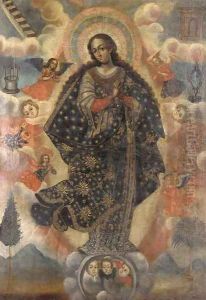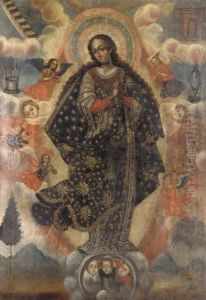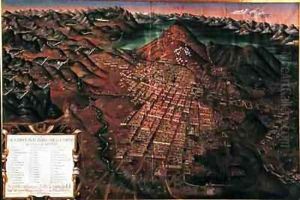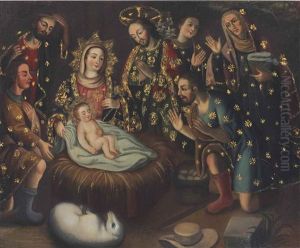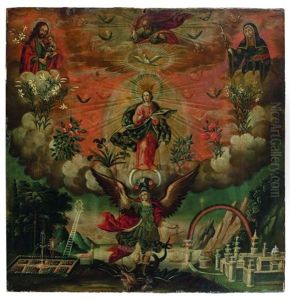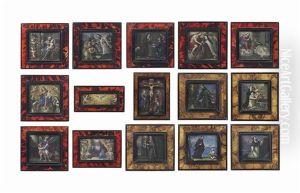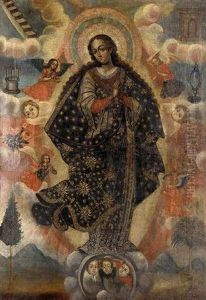Gaspar Miguel De Berrio Paintings
Gaspar Miguel de Berrío was an influential painter in the Andean region of South America during the 18th century. Born in 1706 in La Plata, present-day Sucre in Bolivia, de Berrío is known for his distinctive style that reflects the fusion of European Baroque and indigenous Andean artistic traditions. This style is often referred to as Mestizo Baroque or Andean Baroque.
De Berrío was born into a time when the Viceroyalty of Peru was undergoing significant cultural and artistic transformations. He was part of a lineage of artists; his father, Antonio de Berrío, was also a painter, and it is believed that Gaspar received his initial training from him. He then continued to develop his craft, becoming a master of religious iconography, which was in high demand by the Catholic Church and wealthy patrons in the region.
Throughout his career, de Berrío's works were characterized by vibrant colors, detailed imagery, and a mix of European and indigenous iconography. He often incorporated local flora and fauna into his paintings, alongside traditional Christian symbols, creating a visual language that resonated with the local population. His paintings are noted for their elaborate detail and the use of gold leaf, which added a divine glow to his works.
Gaspar Miguel de Berrío's contribution to the Andean art world was significant, as he helped to establish a regional identity through his artwork. He not only influenced contemporaries but also future generations of artists in the Andean region. His work continues to be studied for its cultural and historical importance, offering insight into the syncretic nature of colonial South American art.
De Berrío died in 1762, leaving behind a legacy that continues to be celebrated in the art history of Bolivia and the wider Andean region. His works can be found in various churches and museums, and they remain a testament to the rich cultural tapestry of 18th-century South America.
